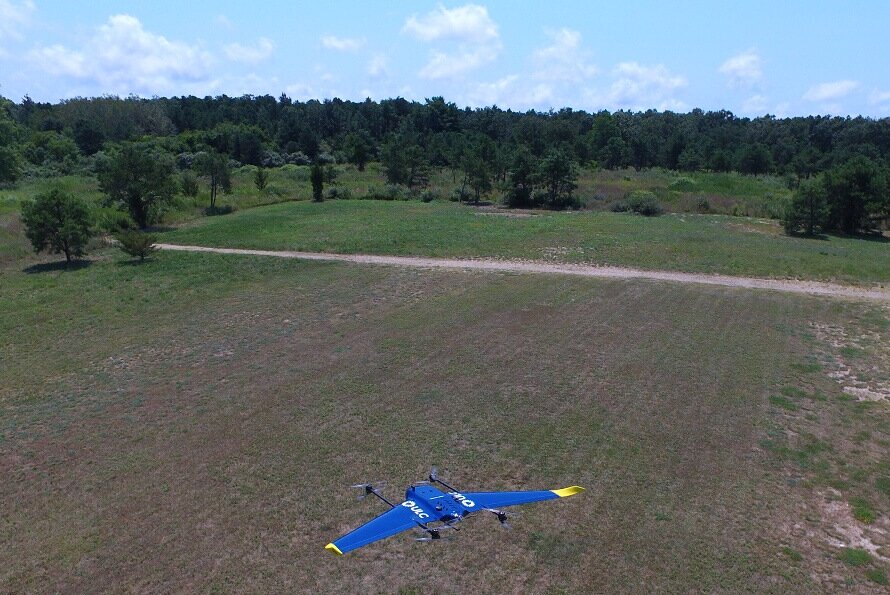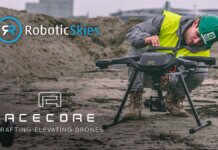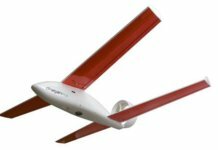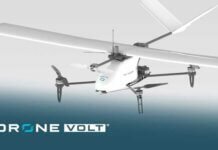Last week, ULC Robotics Inc. says its new aerial services division successfully tested its newly developed unmanned aerial vehicle (UAV), a fixed-wing, vertical takeoff and landing (VTOL) aircraft designed for utility inspections.
The company says the commercial-grade drone has a 10-foot wingspan and a sensor payload capacity of 10 pounds for conducting fully autonomous aerial inspections for utility structures and properties, including electrical transmission lines, gas transmission pipelines and right-of-ways.
ULC has been working with U.S. gas and electric utilities to develop the aircraft for commercial utility applications. The company plans to test a variety of sensors and monitoring payloads with the platform; this includes radiometric thermal cameras, high-resolution DSLR imaging systems, LiDAR and gas leak-detection sensors. Because of the high payload capacity, more than one system can be included on the aircraft at a time, the company points out.
The VTOL UAV has a set of eight quadcopter rotors for VTOL; then, after reaching a predetermined altitude and airspeed, the aircraft transitions into forward flight, combining the practical functionalities of a multi-rotor UAV with the speed and range of a fixed-wing aircraft, ULC explains.

The drone is currently running an electric propulsion system, giving it a flight time of 1 to 1.5 hours. In the near future, ULC intends to integrate an electric/gas hybrid propulsion system that will allow for a five-hour endurance and 50 mph cruise speed (250-mile range), laying the groundwork for flights beyond the visual line of sight.
“The combination of extended flight time, speed and range offers enhanced inspections and assessments that improve upon the capabilities of current utility inspection techniques,” says Mike Passaretti, ULC Aerial Services’ program manager.
Because the drone can take off and land from almost anywhere without a runway, it can be dispatched from difficult-to-access terrain, heavily forested areas and densely populated neighborhoods, where long stretches of utility infrastructure, such as gas transmission right-of-ways, can be time-consuming or unsafe to inspect on foot or with a manned aircraft, the company adds.










